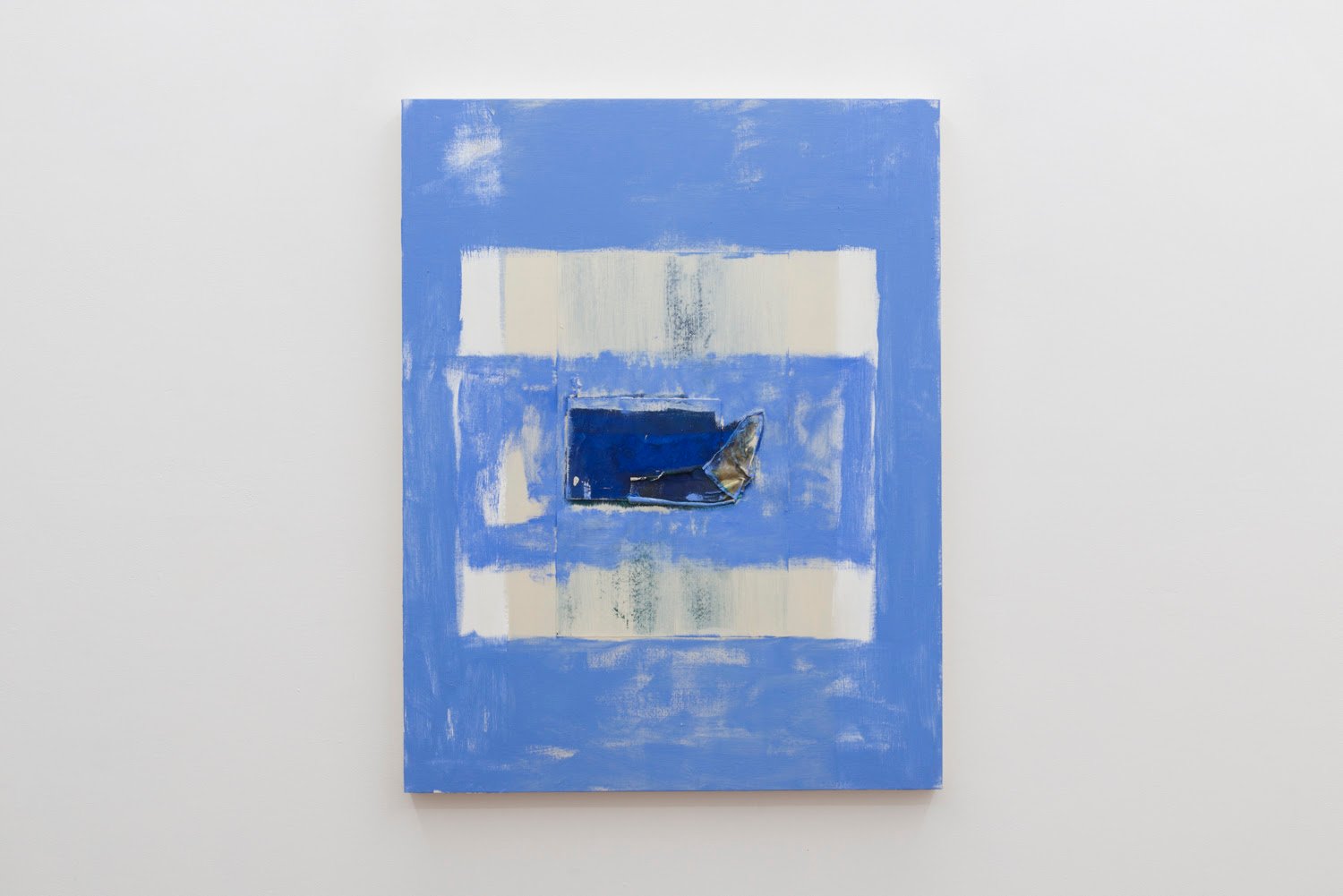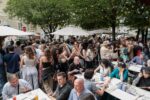Jakub Czyszczoñ – Clavicle

Mostra personale.
Comunicato stampa
Jakub Czyszczoń’s paintings often approximate a faulty symmetry, a regulating structure coming apart at the seams. Imbuing a tenuous sense of order with rough materiality, his practice is invested in the stakes of repetition. The Poznan- based artist typically works by replicating a parameter—like a particular arrangement of rectangles—and allowing himself to be guided by the tension between adhering to and disturbing this formal scenario. Shuttling shapes across paintings, stretching and squaring rectangular forms and segmenting the canvas with strips of textile, Czyszczoń taps into the way in which rehashing can be fruitful, mundane, impossible, revelatory. Rendered in oil in thick, irregular brushstrokes and collaged with an array of materials—twigs, washcloths, snipped up credit cards, newspaper clippings, cut-up clothes—that are often sealed with varnish and epoxy resin, the range in Czyszczoń’s paintings belies this foundational concern with repetition. Today feels far from a reprise of yesterday, though both are framed by a sunrise and a sunset.
But the problematics of repetition are also central to the history of painting, including, most broadly, in the daunting task of gathering up the weighty lineage of what has come before, employing (more or less) the same materials and not simply repeating what has already been done, but rather making something of one’s own. Czyszczoń toys with this instruction by lifting a T-shaped geometric composition he encountered in paintings by Günther Förg and Ad Reinhardt and consciously repeating it in his own work, like an image or a motif. When I first encountered Czyszczoń’s work a few years ago, I remember thinking of a declaration from Rebecca Morris’s 2006 Manifesto (For Abstractionists and Friends of the Non-Objective), “Make work that is so secret, so fantastic, so dramatically old school/new school that it looks like it was found in a shed, locked up since the 1940s.” Repetition was inextricable from many of the breakthroughs in abstract painting in the middle of the 20th century, as many of the Color Field artists whom one could count as Czyszczoń’s forebears committed to and honed a specific visual language (Barnett Newman’s zips, Helen Frankenthaler’s soak-staining etc.) Part of Czyszczoń’s old school/new school edge is how he investigates this serial impulse—both straying from it and trying it on for size.
Some of Czyszczoń’s paintings resemble abstracted flags, others comprise wobbling columns, interrupted stripes, and almost-grids. A meandering imprecision characterizes his constellations of wonky right-angled shapes delineated both by cuts of fabric arranged on the canvas and the bold swathes of orange, red, and blue painted on top of them. In a pair of recent works (his paintings are nearly always untitled), two horizontal rectangles sandwiched a glossy, vertical one, in a configuration that resembles a capital I. Upon closer inspection, the center shape with its splintered translucence is recognizable as a smashed iPhone screen protector, enacting a verbal doubling with the letter. A recent drawing replicates this I shape, with a quadrant of eerily milky eyes cut from a cigarette pack at its center in a homophonic repetition. What to make of these signs for a self? A signature, perhaps, a self-declaration, a clue to the associative word games that under- gird his practice, also evident in the web of connotations proposed by Clavicle, the title of his second exhibition at Ermes Ermes. As Czyszczoń cultivates an idiosyncratic formalism laden with bits of ephemera, maybe the I is a reminder that both he and the viewer are in there too. In making and looking at painting, some kind of subjectivity is always at stake.
Text by Camila McHugh
JAKUB CZYSZCZOŃ (*1983 Koszalin, Poland) lives and works in Poznan
Selected solo and group exhibitions 2022: Clavicle, ERMES ERMES, Rome; Minimo uno. Massimo due, East-Con- temporary, Milano; Confines with Ketuta Alexi-Meskhishvili, JUNE, Berlin; COLLECTIVA #1, Monitor Gallery, Palazzo Maccafani, Pereto; Side effects with Tild Greene, STEREO, Warsaw; 2021: Pocket Knife Instead of the Alphabet, STE- REO, Warsw; 2020: Volume of Effort (3), Skala Gallery, Poznan; From A to Z and back, STEREO, Warsaw; 2018: Volume of Effort (2), Skala Gallery, Poznan; 2017: Company for Silence, Projects at Fifteen, Tel Aviv; 2016: Micrograms, ERMES ERMES, Roma.
In collaboration with Polish Institute in Rome



